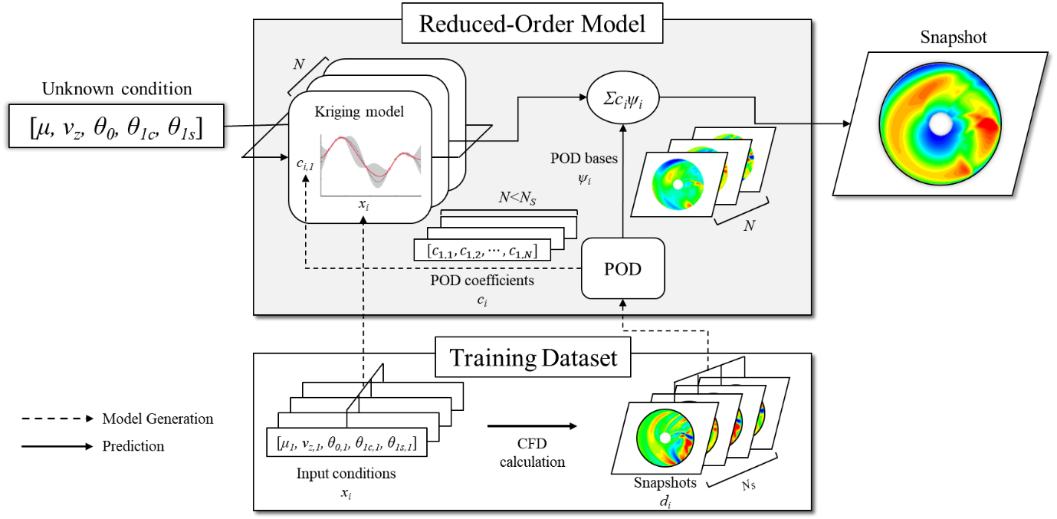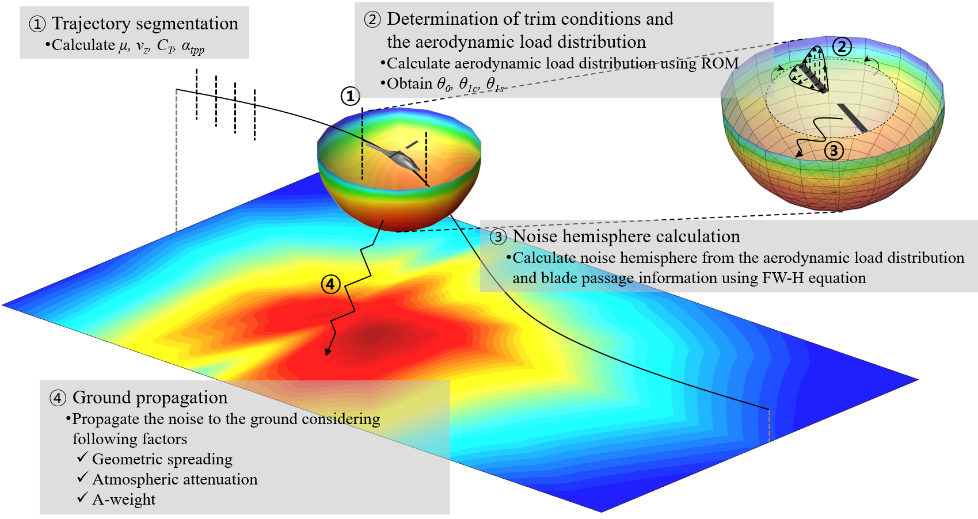Rotorcraft Aeroacoustics
Effective Noise Prediction Method
With the advent of UAM, noise generated by these vehicles has become a critical factor for public acceptance. To address this issue, it is essential to accurately analyze the noise produced by UAM—particularly rotor noise, which is the primary source of acoustic emissions. Such precise noise analysis relies on high-fidelity aerodynamic simulations; however, performing these simulations across a wide range of flight conditions and vehicle configurations is not feasible in terms of time and computational cost. To overcome this limitation, a reduced-order model (ROM) was employed. Because noise characteristics depend on both direction and frequency band, it is more efficient to predict the entire noise field rather than merely estimating sound levels (e.g., SPL) at isolated points. Accordingly, the aerodynamic load distribution is predicted using the ROM. Aerodynamic noise can be categorized into tonal and broadband components; tonal noise itself comprises loading noise, thickness noise, and so forth. Both loading noise and thickness noise may be computed from the aerodynamic load distribution and rotor geometry information, and these calculations require far less time than running full flow simulations. Therefore, by rapidly predicting the aerodynamic load distribution, one can efficiently compute the rotor-generated noise field.


Reference
[1] Kwon, S., Hong, Y., and Yee, K., “Prediction of Ground Noise Footprint Using Reduced Order Model,” presented at the AIAA AVIATION 2023 Forum, San Diego, CA and Online, 2023. https://doi.org/10.2514/6.2023-3654
[2] Kwon. S., Kang, Y., Hong, Y., and Yee, K., “Time-Efficient Aerodynamic Load Prediction Using Reduced-Order Modeling for Ground Noise Calculation,” Journal of Aerospace Engineering,. Pre-print, https://doi.org/10.1061/JAEEEZ.ASENG-6179